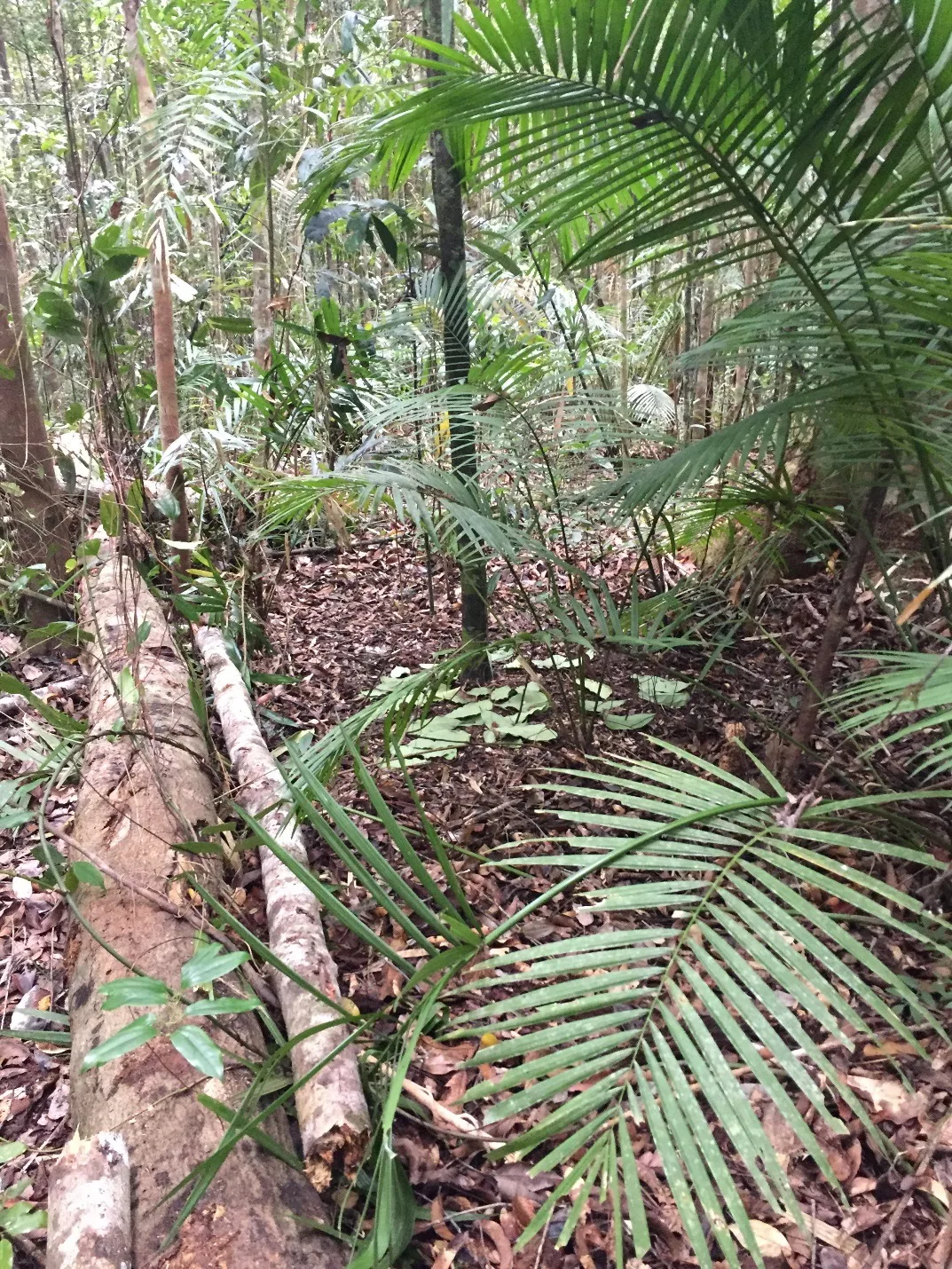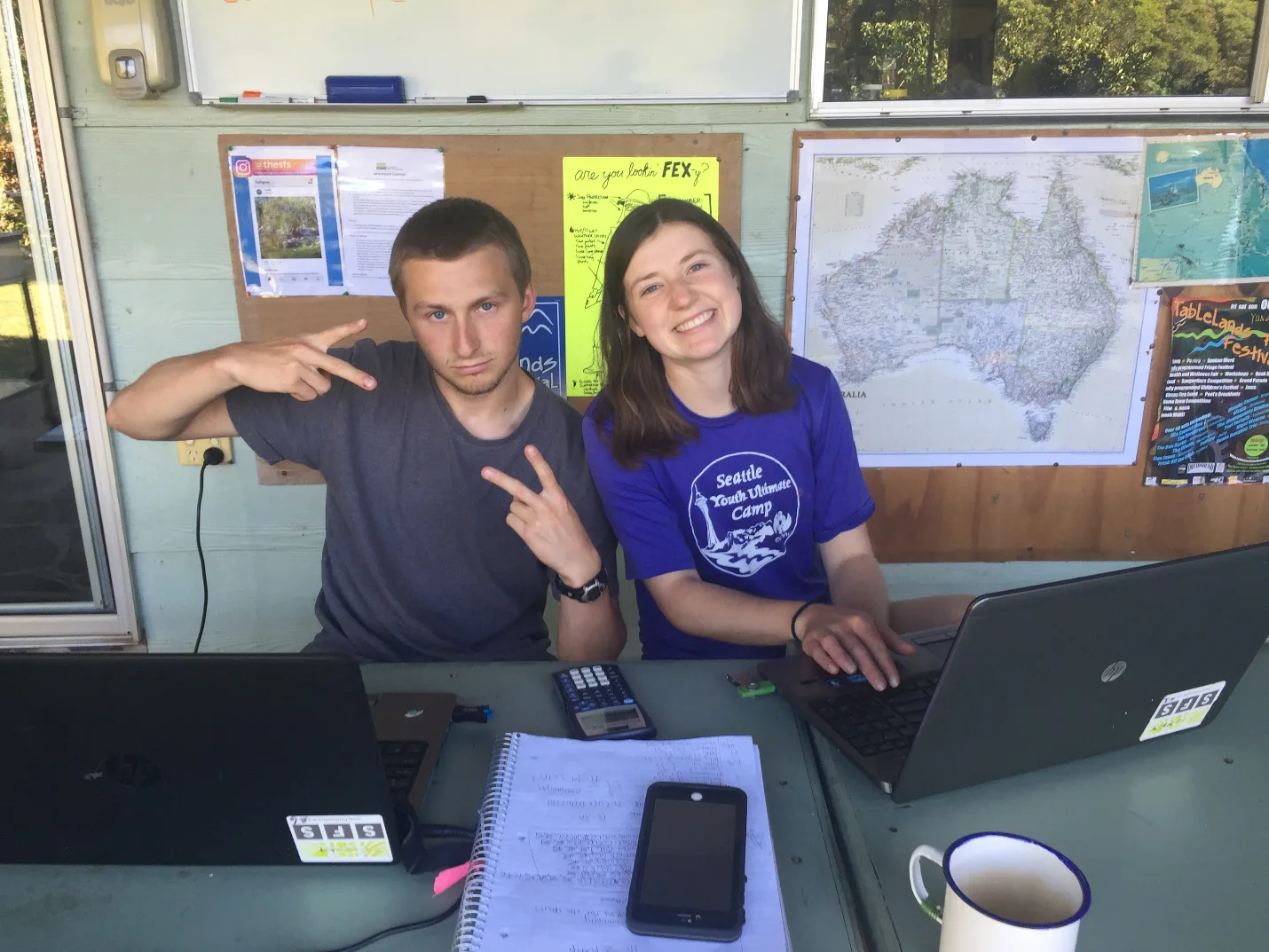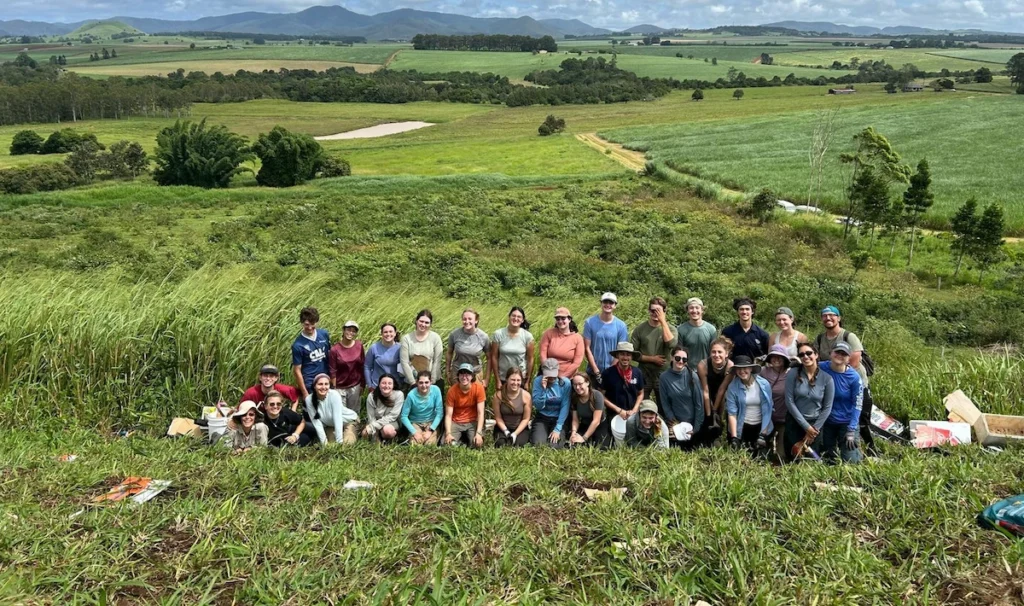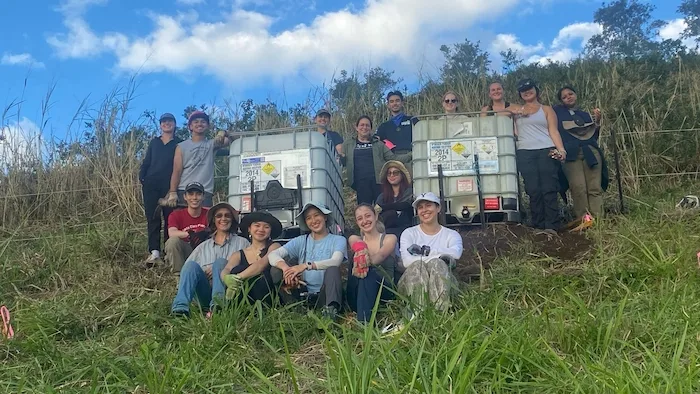In Search of the Tooth-Billed Bowerbird!
Imagine you’re hiking in the Atherton Tablelands. Rolling farmlands to your left, dense tropical rainforest to your right. Coming across a small road, you turn right, and enter a World Heritage Area. The canopy around you closes, the air cools, and the sounds of whipbirds, bowerbirds, and cockatoos echo through the forest. Just then, you hear a large crash somewhere nearby! Curious, you head towards the noise, and abruptly the source reveals itself: A group of five young biologists stagger out of the forest equipped with data sheets, a few small GPS units, and field gear.
Fear not! We are these students! This past week, we were busy with our field exercises, or FEXes.
For our course in rainforest ecology, we tracked tooth-billed bowerbird courts throughout the Center for Rainforest Studies field station and nearby wet tropics area. The purpose of the study is to understand the status of these birds post-disturbance, in this case, after Cyclone Larry (2006). The courts, which are cleared patches of forest neatly decorated with up-turned leaves, give an indication to the status of a population of bowerbirds. More courts with more leaves shows a healthy population. Using GPS data, we mapped the sites of these courts using Google Earth and GIS. It’s extremely exciting to do some real “dirty” science.

Bowerbird courts, which students surveyed in a field exercise, are characterized by upturned leaves arranged on the forest floor
In our Natural Resource Management course, we gathered data from experimental plots of regrowth forest. We took samples, measurements, and coordinates of trees in plots on site. Back in the classroom, we identified samples from trees to identify unknown species. Altogether we took measurements from over 500 trees! This experiment determined the best conditions for different tree species to grow in, by observing regrowth in these treatment plots since 2015.
Our Environmental Policy and Socio-Economic Values class brought us out of the rainforest, and into town. We explored towns of the Atherton Tablelands, gathering local perspectives on climate change through newspapers, information centers, and interviews. We conducted most of our interviews in a town called Kuranda.
The field component of data collection has been fun and exciting. With all this data, it was also time to run some tests, and write up some reports. So, we put away the GPS’s, pressed our leaf samples, organized our interviews, and hit the books.
The data analysis portion has been some of the most interactive and helpful statistics work I’ve ever done. We poured over data in spreadsheets, and ran tests in a statistical software program called PAST. Our professors provided extra help sessions on how to run certain tests like ANOVA, and taught us the “Do’s and Don’ts” of scientific writing. The FEX process was an encouraging, collective effort that focused on everyone learning the most they could about scientific data analysis and writing.
This experience was amazing, at times draining, and extremely educational.

Students Bo Gould and Louisa Goss write lab reports for the field exercises
Related Posts

Cinder Cone Chronicles: Lessons from Drought, Data, and Determination

Restoration on a Cinder Cone: A Syntropic Story
